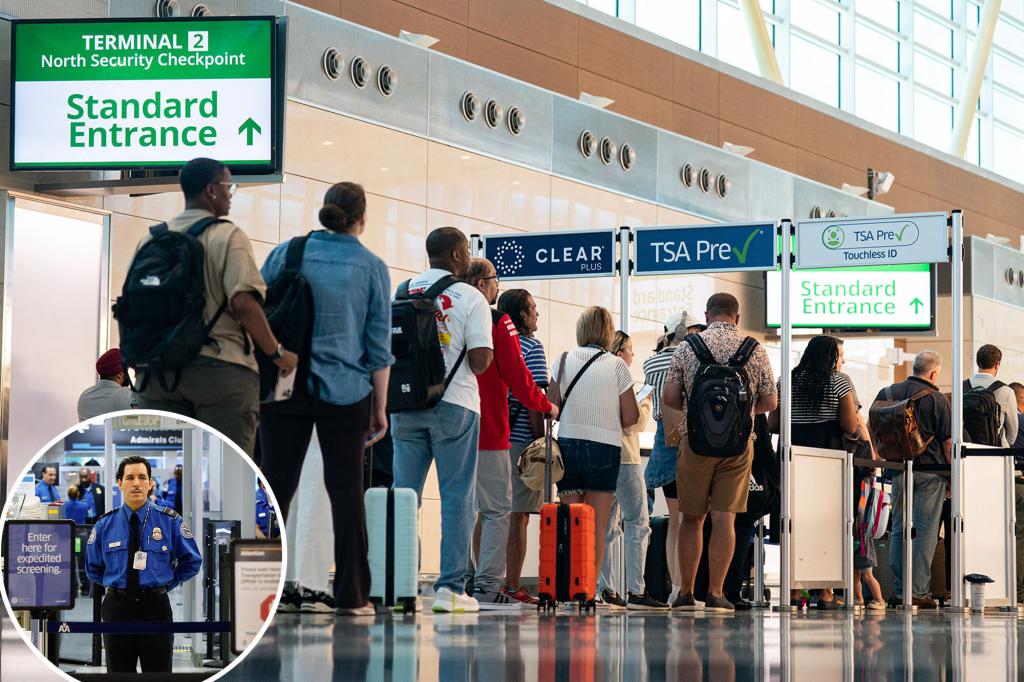TSA PreCheck Gets a Tech Upgrade: Introducing Touchless ID
Traveling through airport security just got a step easier for some passengers. TSA PreCheck, already a time-saver for millions of travelers, is introducing a new feature at select airports that promises to make the screening process even more seamless. The new “Touchless ID” system will eliminate the need to present boarding passes or identification for eligible travelers – using only facial recognition technology to verify your identity.
The enhanced system, officially called Traveler Verification Service, works by capturing a live facial image at security checkpoints and comparing it to photos you’ve previously provided to the federal government, such as your passport photo. This technology represents a significant leap forward in airport efficiency, though its rollout is currently limited to specific airlines and airports. Participating carriers include major players American Airlines, Delta Air Lines, United Airlines, and Alaska Airlines, with service available at 15 major airports across the country, including busy hubs like JFK, LaGuardia, Newark Liberty, Chicago O’Hare, and Los Angeles International. The TSA hasn’t announced immediate expansion plans but notes on its website that it “looks to continue to expand this technology to additional airports with new airline partners” as part of ongoing evaluation efforts.
The opt-in process is designed to be straightforward for eligible travelers. To participate, you must be a current TSA PreCheck member with an active profile on a participating airline and have valid passport information uploaded to that profile. During mobile app check-in, partner airlines will notify eligible passengers of their option to use the Touchless ID system. This voluntary program aims to speed up the verification process while maintaining security standards, using technology that’s becoming increasingly common in various aspects of air travel. The system represents part of a broader effort to modernize airport security while balancing efficiency and safety concerns.
The introduction of Touchless ID coincides with several other passenger-friendly changes the TSA is implementing nationwide. Under the new “Families on the Fly” initiative, security checkpoints will add dedicated lanes specifically for families traveling with children, addressing a long-standing pain point for parents navigating busy airports with young travelers. Similarly, the “Honor Lane” program, currently available at 11 airports for uniformed military members, will be expanded across the country, providing expedited screening for service personnel. These specialized lanes aim to improve the overall flow of security checkpoints by grouping travelers with similar screening needs.
Perhaps most notably for regular travelers, Homeland Security Secretary Kristi Noem announced that the TSA will no longer require passengers to remove their shoes at security checkpoints – even for those without PreCheck status. This reverses one of the most recognizable security measures implemented after the September 11 attacks and represents a significant shift in screening procedures. Additionally, Noem indicated that the administration is considering modifications to the current restrictions on liquids, aerosols, and gels, though specific changes haven’t yet been announced. These adjustments suggest a broader rethinking of airport security protocols that have been in place for nearly two decades.
The Touchless ID system is currently operational at major airports serving key metropolitan areas including Atlanta, Chicago, Dallas-Fort Worth, Denver, Detroit, Las Vegas, Los Angeles, New York, Portland, Salt Lake City, San Francisco, Seattle, and Washington D.C. Each participating airline offers the service at slightly different combinations of these airports, with Delta providing the most extensive coverage. As air travel continues to evolve in the post-pandemic era, these technological and procedural improvements reflect the industry’s push to balance security requirements with passenger convenience. While facial recognition technology has raised privacy concerns in other contexts, the opt-in nature of this program allows travelers to choose whether to participate in exchange for a potentially faster security experience.















